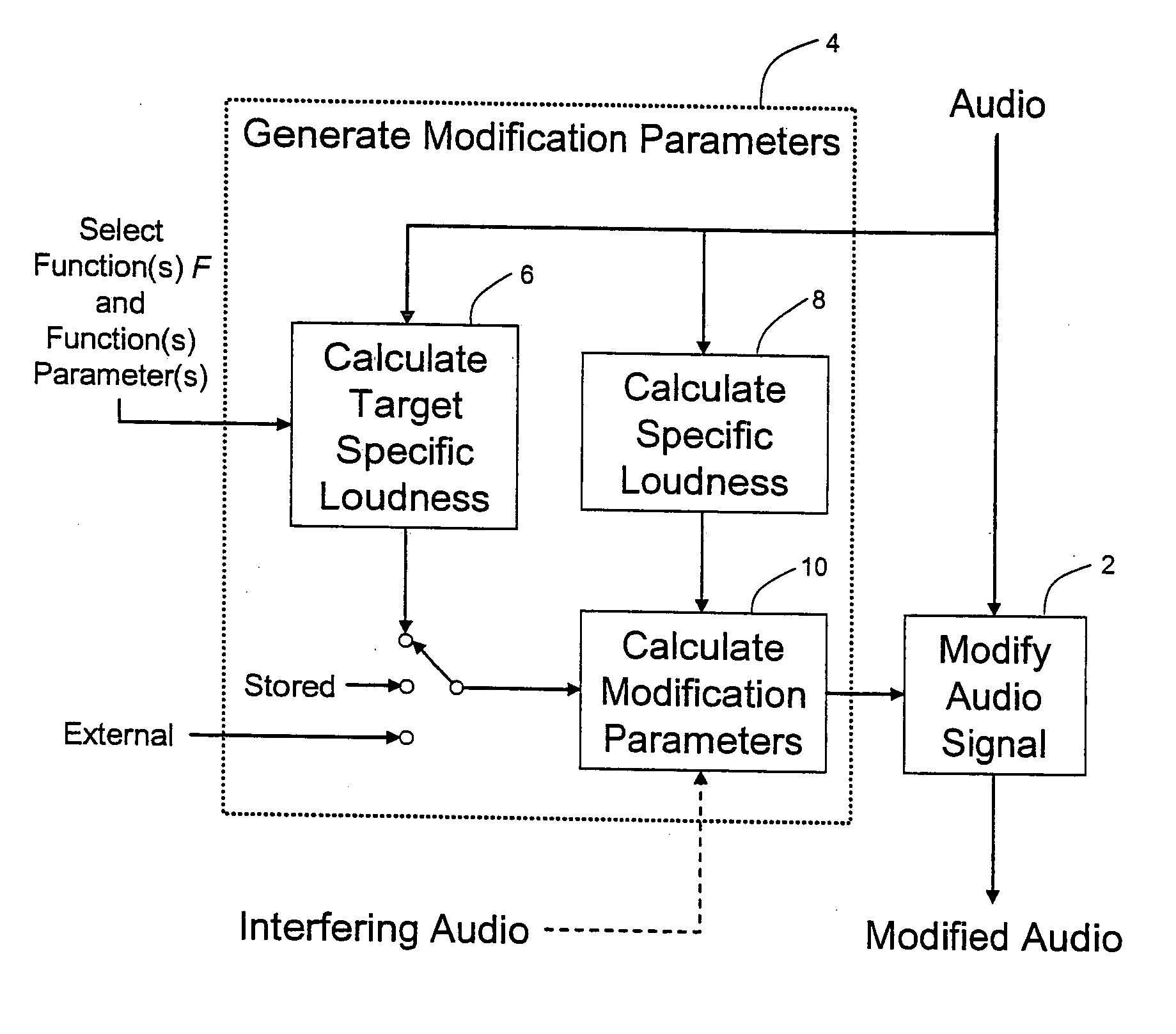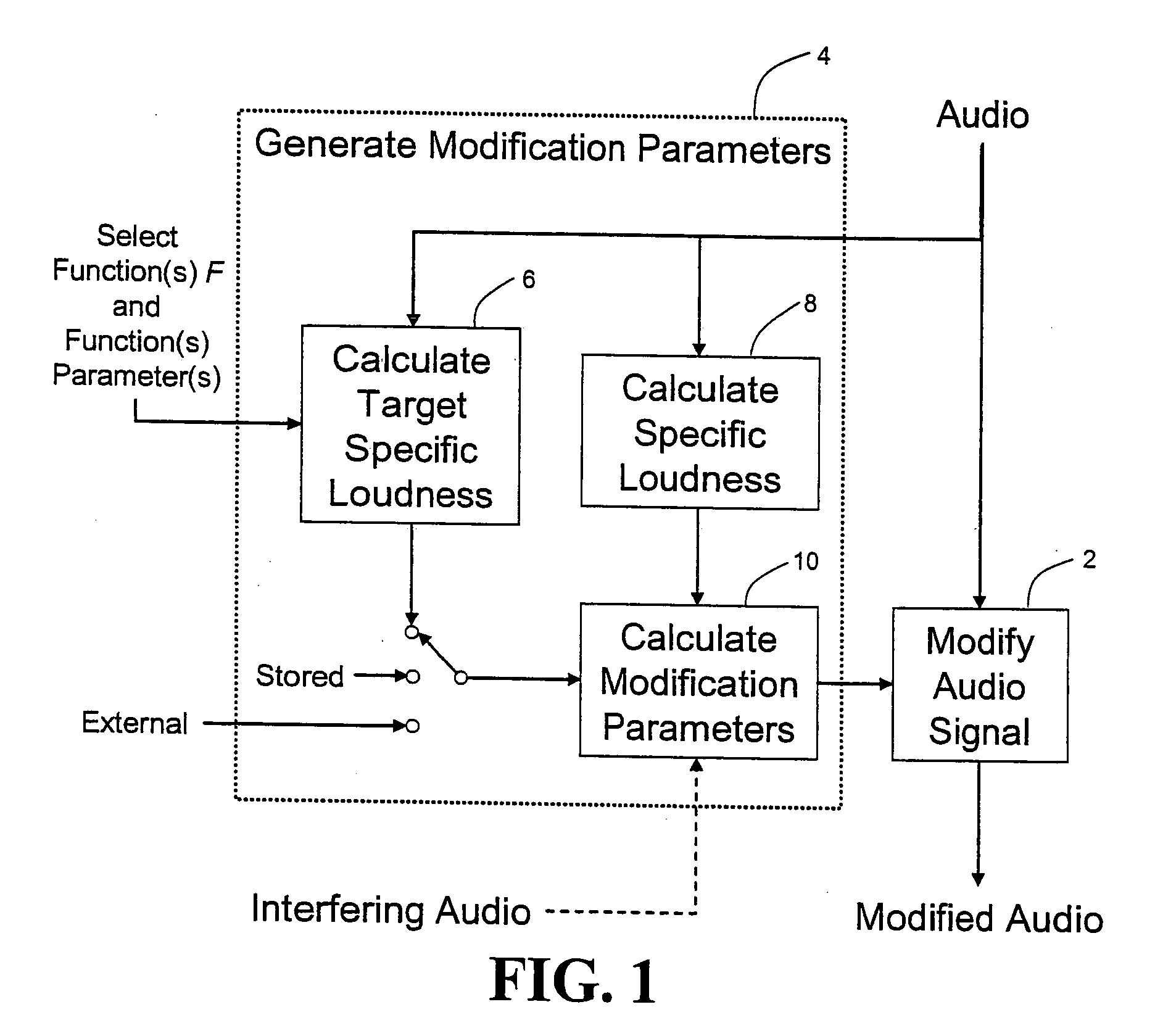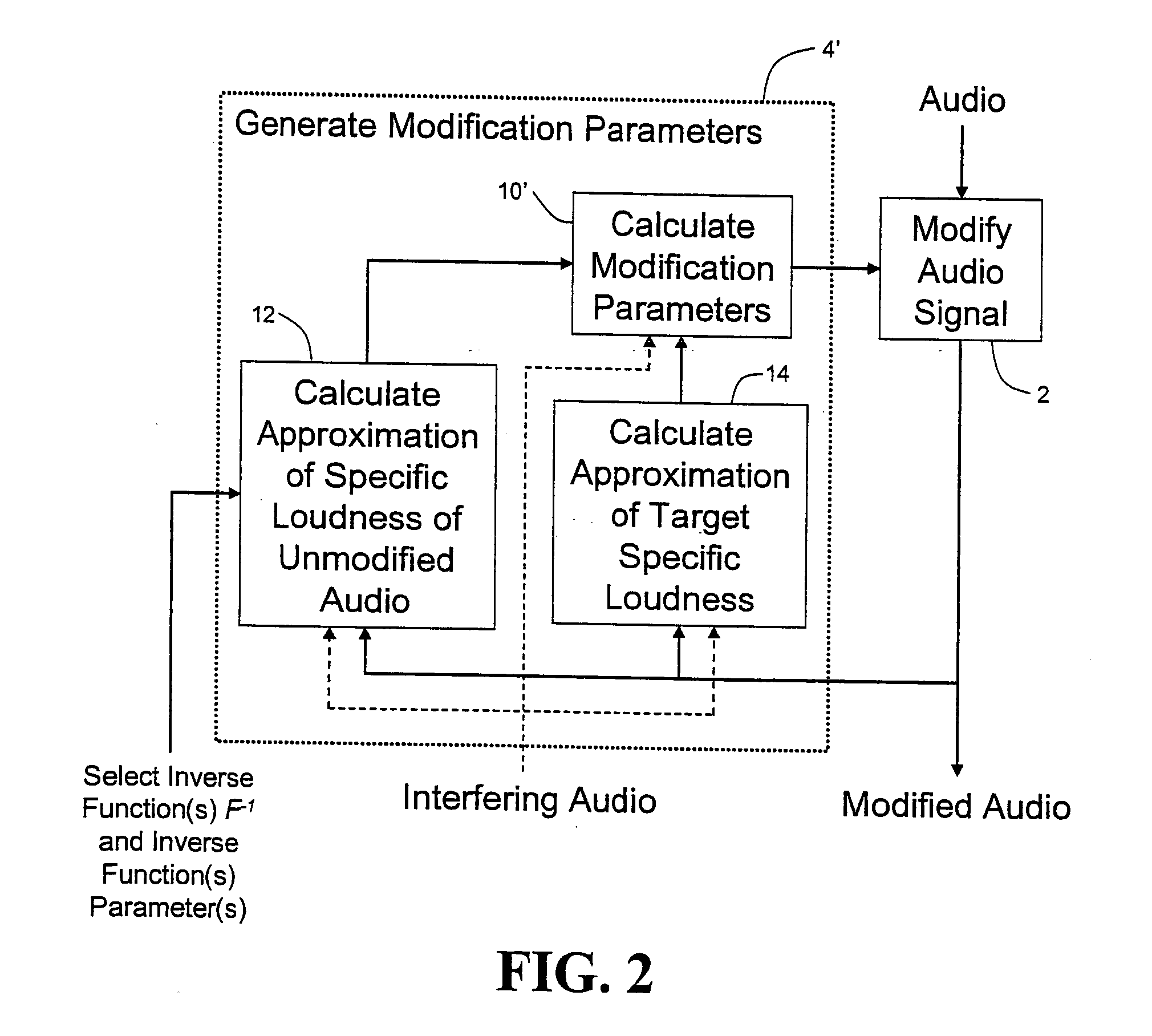Calculating and adjusting the perceived loudness and/or the perceived spectral balance of an audio signal
a technology of perceived loudness and spectral balance, applied in the field of audio signal processing, can solve problems such as the alteration of the perceived spectrum of audio, and achieve the effect of greater control of perceptual loudness and perceived spectral balan
- Summary
- Abstract
- Description
- Claims
- Application Information
AI Technical Summary
Benefits of technology
Problems solved by technology
Method used
Image
Examples
modification 105
Specific Loudness Modification 105
[0133]In the specific loudness modification function (“Specific Loudness Modification”) 105, the target specific loudness, referred to as {circumflex over (N)}[b,t], may be calculated from the specific loudness of SL 104 (FIG. 7) in various ways depending on the desired application of the overall device or process. As is described in greater detail below, a target specific loudness may be calculated using a scale factor α, for example, in the case of a volume control. See Eqn. 16 below and its associated description. In the case of automatic gain control (AGC) and dynamic range control (DRC), a target specific loudness may be calculated using a ratio of desired output loudness to input loudness. See Eqns. 17 and 18 below and their associated descriptions. In the case of dynamic equalization, a target specific loudness may be calculated using a relationship set forth in Eqn. 23 and its associated description.
[0134]In this example, for ...
PUM
 Login to View More
Login to View More Abstract
Description
Claims
Application Information
 Login to View More
Login to View More - R&D
- Intellectual Property
- Life Sciences
- Materials
- Tech Scout
- Unparalleled Data Quality
- Higher Quality Content
- 60% Fewer Hallucinations
Browse by: Latest US Patents, China's latest patents, Technical Efficacy Thesaurus, Application Domain, Technology Topic, Popular Technical Reports.
© 2025 PatSnap. All rights reserved.Legal|Privacy policy|Modern Slavery Act Transparency Statement|Sitemap|About US| Contact US: help@patsnap.com



